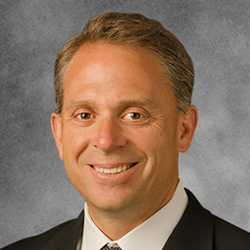How can smart technologies help utilities with resiliency and cost-saving efforts as aging infrastructure encounters extreme weather?

A: As climate change progresses, floods, droughts, and other extreme weather events will become the new normal for global communities — and threaten the availability of clean water on a day-to-day basis. While our first instinct is often to focus on building bigger reservoirs and more durable pipes, this is not always a realistic approach. The cost of water is increasing at three times the rate of inflation; in order to build a truly sustainable water future, the affordability of, and accessibility to, safe and healthy water must be taken into account alongside the construction of new distribution infrastructure. As we expand the number of water utilities on the Smart Grid for Water, we can reduce infrastructure investment and limit rate increases by more accurately predicting consumption patterns and stockpiling resources for future use.
Trevor Hill
Mr. Hill is CEO and a co-founder of FATHOM, which provides utility-to-utility Smart Grid for Water technology solutions. Prior to that, he co-founded Algonquin Water Resources of America in 2003, a division of the Algonquin Power Income Fund, of which he served as Director of Operations from 2000 to 2003. In 1994, Mr. Hill co-founded Hill, Murray & Associates, a design-build firm specializing in the construction and operation of water reclamation facilities in British Columbia and the Canadian Arctic.
